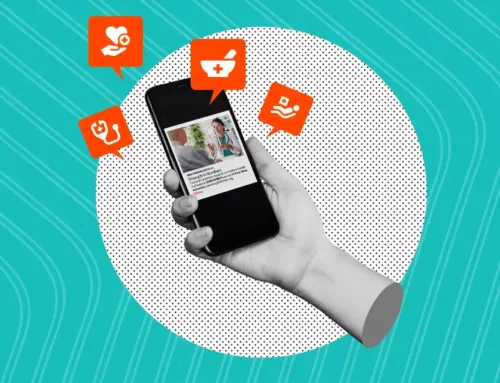Why Email Marketing is More Relevant Than Ever
Even though some marketers may try to convince you that email marketing is a digital dinosaur, it’s more relevant and effective than ever. With automation and analytics improving its efficiency, and privacy concerns hampering other digital marketing strategies, email still offers great engagement, personalization and return on investment. Read on to learn more!
Email marketing is like an old tree that keeps growing stronger roots. It’s been around since the beginning of the internet age, but that doesn’t mean it’s outdated.
With the help of automation and analytics, email has transformed from mass messages to content-rich one-on-one conversations. And, in a world where we’re all worried about keeping our information safe and having enjoyable online experiences, new anti-SPAM policies and third-party cookie deprecation are making email marketing more relevant than ever.
It’s an exciting new era for email marketing. Here’s what’s driving this change and what you can do right now to take advantage of it.
The State of Email Marketing in 2024
Email might seem old-school, but it’s been keeping up with the times, getting better as it goes along. This year, we’re seeing some big changes that could make email even more powerful.
Getting Tough on SPAM
Email companies like Google and Yahoo have added new rules aimed at cutting down on unwanted emails from bulk senders. Marketers have to be really careful about what emails you’re sending and to whom. This means getting explicit permission from people before sending them emails, sending out relevant content and making unsubscribing from email communications easy. Not complying with these policies can result in having all email communications from your domain blocked, which can have some serious business implications.
Tossing Third-Party Cookies
With the end of third-party cookies nearing, marketers are looking for new ways to personalize content and target audiences. Email marketing is perfect for this because it relies on first-party data (information that customers willingly share). Simple user actions like subscribing to lists, engaging with content and clicking calls to action help marketers tailor content to individuals while still respecting their digital privacy.
Working Smarter with Automation
Meanwhile, automation tools for email are smarter and more accessible for businesses of all sizes. With these tools, businesses can send out personalized and timely emails based on user behavior, preferences and engagement signals. From saying “howdy” to reminding you about that thing you left in your virtual cart, automation is making emails more useful and interesting for users, while making them easier to measure and optimize for marketers.
Harnessing the Power of AI
Artificial Intelligence (AI) is changing the game, making emails even more personalized and effective. AI can figure out the best time to send an email, what to say, and who’s most likely to be interested. It’s getting better at predicting what customers might want next, making every email feel like it was written just for you. Plus, AI-driven content generation tools are helping generate email content at scale.
Why Email Marketing Still Wins
Despite all the changes in how we shop and share online, email marketing brings in a whopping $36 for every $1 spent – that’s a 3600% return on investment. Here are some more reasons why email marketing deserves another look:
- Consumer Preference: 72% of consumers prefer email as their main channel of communication from brands.
- Engagement and Purchase Influence: 43% of consumers open marketing emails at least daily, with 29% reporting multiple times per week. Of those, 60% reported making a purchase monthly, and another 18% reported making purchases at least weekly.
- Impact of Personalization: Personalized email campaigns have 6x higher transaction rates than non-personalized emails, while emails with personalized subject lines see a 26% boost in open rates.
- Effectiveness Compared to Other Media: Even as social media and SMS (text message) marketing have gained popularity, businesses continue to rely on email marketing due to its superior engagement and returns. Additionally, 79% of marketers place email among their top three most effective channels.
- Mobile Engagement: With 60% of emails being opened on a mobile device, people are checking their email more than ever before. Designing mobile-responsive emails can increase mobile clicks by 15%.
- Measurable Results: Marketers can track open rates, click-through rates, conversion rates and more, allowing for continuous optimization and better campaign performance.
How to Get the Most Out of Your Email Marketing
Now that we’re all re-energized about sending emails, let’s take a look at some email marketing best practices and practical tips that can help take your sends to the next level.
- Build a list of people who really want to hear from you by sharing great content or offers.
Effective email marketing starts with a good list. Prioritize gaining subscribers organically through your website, social media and other channels where potential customers are already interacting with your brand. Use lead magnets like ebooks, webinars or discount codes as incentives for subscription. Regularly clean your list to remove inactive subscribers, ensuring your engagement rates accurately reflect your active audience. - Segment your audience so you can send more relevant emails.
Audience segmentation allows for more targeted and relevant email campaigns. Divide your email list based on demographics, purchase history, engagement level, or any other criteria relevant to your business. Segmentation leads to higher open and click-through rates because it ensures subscribers receive content that’s tailored to their interests and needs. - Make your emails feel personal by using what you know about your readers.
Beyond using a subscriber’s name, personalize content based on the recipient’s behavior, preferences and past interactions with your brand. Personalized emails are more likely to resonate with your audience, leading to higher engagement and conversion rates. As mentioned earlier, personalized emails outperform non-personalized communications. - Catch their eye with a subject line that makes them want to read more.
Your subject line is the first impression your email makes. It should be compelling and clear, indicating the value the reader will find inside. Subject lines that create a sense of urgency, curiosity, or offer immediate value tend to have higher open rates. Testing different subject lines can help identify what resonates best with your audience. - Make sure your emails look great on phones.
With a significant portion of emails being opened on mobile devices, it’s crucial to ensure your emails look good and function well on smaller screens. Use responsive design, keep your layout simple and use large, easily clickable buttons for calls to action (CTAs). - Use automation to send emails at just the right time.
Email marketing automation tools can help send the right message at the right time. For example, welcome emails for new subscribers, birthday offers and cart abandonment emails can be automated to increase engagement and conversions. Automated sequences can also nurture leads through the sales funnel with minimal manual effort. - Keep testing different approaches to see what works best.
Continuous testing is key to improving your email marketing performance. A/B testing different elements of your emails, such as subject lines, email copy, images and CTAs, can provide valuable insights into what works best. Use these insights to optimize future campaigns. - Always play by the rules, respecting privacy and consent.
Ensure your email marketing practices comply with regulations like the CAN-SPAM Act as well as email provider policies. These rules require practices like obtaining explicit consent from subscribers before sending emails, providing a clear way to unsubscribe and respecting user privacy. - Keep an eye on how your emails are doing and use what you learn to improve.
Regularly review your email marketing metrics—open rates, click-through rates, conversion rates, bounce rates and unsubscribe rates—to gauge the success of your campaigns. Use this data to refine your strategy, focusing on what delivers the best results. - Ask questions, encourage feedback and invite customers to engage across platforms.
Use your emails to encourage interaction by asking questions, soliciting feedback or inviting subscribers to connect on social media. Engagement can provide valuable insights into your audience’s preferences and increase their investment in your brand.
SUPER-IMPORTANT BONUS TIP: Please, please, please resist the urge to buy a list. The quality of your contacts is more important than the quantity, so sending a bunch of emails to unengaged contacts is a surefire way to end up in Google jail – which could affect more than just your email marketing efforts.
Full Send
Much like a pop diva, the resurgence of email marketing is a testament to its adaptability, effectiveness and ability to connect with customers. Better email marketing technology and rising privacy concerns in other digital media mean email is due for a renaissance – or at least show its resilience. The question is, will you be center stage or watching from the cheap seats?
Whether you need help getting started or are looking for a course correction, the digital-minded pros at Responsory are here to help. From email marketing audits to design services, we have the bench strength to help you ride the new wave of email domination. Reach out to your account manager or contact us to get started.

About the Author
A lifelong dinosaur enthusiast and amateur Egyptologist, Aimee Dierbeck aspired to become a museum curator from a young age. As a bright-eyed anthropology major interning at a local museum, she realized that her true passion for museums did not lie in the artifacts or fossils themselves but in the stories they told and how these stories were communicated to the public. From this revelation, her academic interests and subsequent career took a significant turn into marketing, graphic design, copywriting, and, eventually, web strategy. In her role as Director of Web Services, she leverages her love for storytelling and digital curiosity to curate intentional, impactful experiences.






